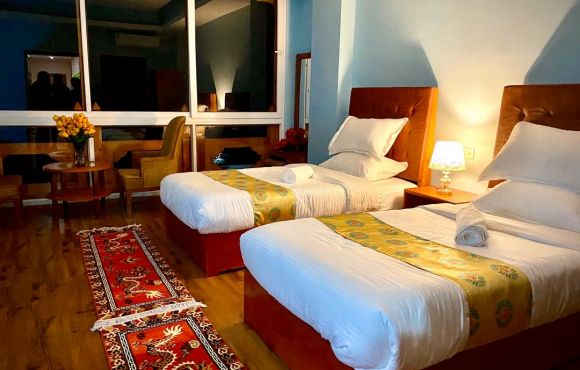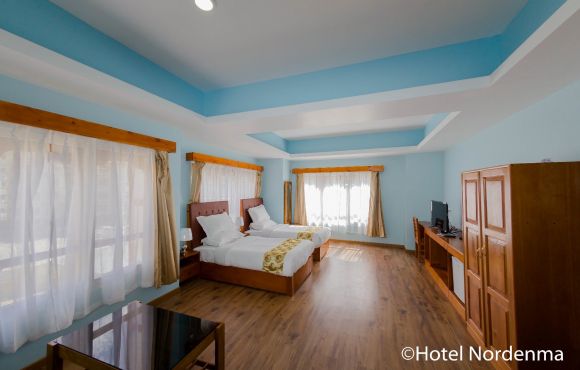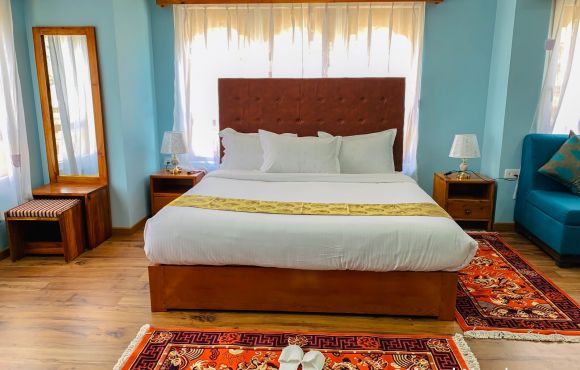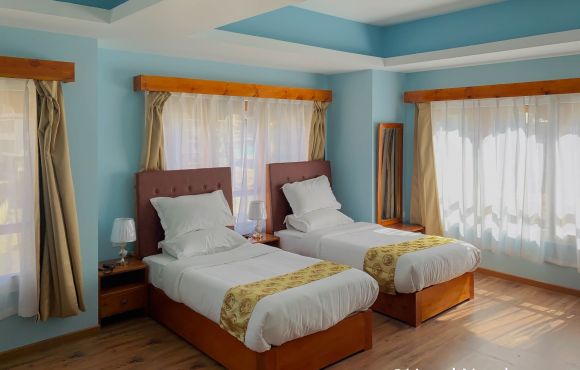Responsible Tourism – Best Practice
At Experience Bhutan Travel, we are determined to make tourism (for both guests and hosts), more meaningful and sustainable by committing ourselves to pursue the principles of Responsible Tourism as one of our core values. Since all tourists to Bhutan have to be routed through local tour operators, we realize that we have a big responsibility in determining the impacts of tourism on the sociology-economic situations in the country.
Practicing of responsible tourism will have all positive impacts like minimizing negative economy, environmental and social values, generates greater economic benefits for local people and enhances the well being of the local communities in the host country.
Thousands of people travel to Bhutan for holiday resorts each year and these visitors can make a real difference – both good and bad. By following responsible tourism practices visitors can help protect the natural environment, traditions and culture – the things that make holidays special!!
We can educate and improve the well being of local communities by spreading the benefit of each visit to those who really need it. Managing tourism in a responsible way can help ensure that there are great places for us all to visit – for generations to come.
Responsible tourism is about making a positive difference when we travel.
- Enjoying ourselves and at the same time taking responsibility for our actions
- Respecting local cultures and the natural environment.
- Giving fair economic returns to local people
- Helping to spread the benefit of our visit to those who need it most.
- Recognizing that water and energy are precious resources for our survival that we need to use them carefully and teach the locals practice the same.
Protecting endangered wildlife, natural environment and preserving the cultural heritage of the places we visit for the future enjoyment of visitors and the people who live there.
At the operational level, the components of this grand vision are being translated into conspicuous actions. For instance, if we are a tour operator, we have to use Liquid Petroleum Gas to cook and heat during our entire tour so as not to put pressure on wood and forest resource. Bhutan by the way has ambitiously sworn to keep its present forest cover of 72% to a minimum of 60% for all times to come. Our forests would definitely act as a mini carbon sinks for the global emission of Carbon dioxide. We are seriously considering on benefits of carbon trading.
It is mandatory for all tour operators to collect and carry back trash from the trekking routes and dispose properly. Annually, cleaning campaigns are being organized to promote clean environment. Awareness campaigns on aspects of pollution, cultural erosion, health education, and sustainable livelihood tips etc., during tours is a part of our package for visitors. Eco-tourism is gaining greater momentum. If you are a guest of Experience Bhutan Travel, it is a taboo to use detergents in streams, springs and rivers. You have to stay only in designated campsites, respect the local culture and be a Bhutanese for a while!
Arts & Architecture
The most exciting and vital aspects of the Bhutanese tradition and heritage are found in its arts and crafts. Much of Bhutanese spiritual and intellectual life is manifested through its arts. Bhutanese arts are not primarily concerned with abstracts of ‘beauty’ (that may appeal to few), but with interpretation of values and beliefs that are held by vast majority and which embody the eternal stream of life or consciousness. It is a subjective process deeply imbued with strong sense of morality, with many art forms epitomizing the eternal struggle between forces of good and evil.
Bhutanese art & craft, particularly those that are religious in their thematic content follow strict iconographic rules. Merit can be earned only if the prescribed rules are strictly followed. Bhutanese arts have been influenced largely by Tibetan & Indian. Artworks are mainly created for religious purposes since artists were traditionally monks. Nowadays, artists can be anyone who has artistic gift. The main work of art is to gain merit.
Crafts are sold very expensively in Bhutan, especially woven fabrics. Actually they are not made for selling to tourists. Many women, especially in central and eastern Bhutan, weave at home. They do not belong to any particular social group or corporation, but are simple village women who use their spare time to weave clothes for their family and sell what is left over. Most craftsmen, except gold smiths and painters, are peasants who produce craft products, particularly daily articles and fabrics during their free time. The examples of renowned specialties from different regions are the silks from eastern Bhutan, woolen products from Bumthang , Bamboo wares from Khyeng (central Bhutan), Brocade from Lhuntse, wooden crafts from Tashiyangtse (eastern Bhutan), gold & silver work from Thimphu and yak hair goods from northern region of Lingtshi & Laya.
Architecture is also a significant feature of the Bhutanese identity. Dzongs (fortresses), Lhakhangs (temples), Goenpas (monasteries), Chortens (stupas), palaces, bridges and vernacular housing that can be seen across the country side form the diverse but harmonious architectural aspirations of the culture heritage and living tradition of the Bhutanese people. The unmatched combination of engineering skill and aesthetic beauty is reflected in all structures. Traditional shapes, colors and patrons on the walls, doors, windows, places Bhutanese architecture in a class of its own.
Among the diverse architectural expressions of the country, the castle-like dzongs, with their massive stonewalls, large courtyards and beautiful architectural details and galleries, are the finest examples of Bhutanese architecture.
Impressive monasteries, set in commanding positions on hilltops or at the confluence of rivers, are the administrative centers of their regions. The dzong represents a unique architectural marvel. Hundreds of wooden planks are joined together without a single nail and no formal architectural plan goes into its construction.
Secular architecture in Bhutan finds its main form in traditional farmhouses. Bhutanese houses have a distinct character from those of other Himalayan countries. Due to steep terrains, they are usually built as scattered houses or in clusters rather than in rows.
Most traditional houses are relatively spacious and take advantage of the sunlight. Family dwellings are often three storied, with room for livestock on the ground floor, storage and sometimes-living quarters on the second floor, while the third floor houses living quarters and a choesham (shrine).
Between the third floor and the roof an open space is usually kept for open-air storage. Boulders over the lath are set to hold down wooden shingles on the roof truss. Windows and doors are normally painted giving the house a very festive appearance. Floral, animal and religious motifs are mainly used as themes for colorful paintings. The typical construction materials use in traditional Bhutanese houses is timber, stone, clay and bricks.







